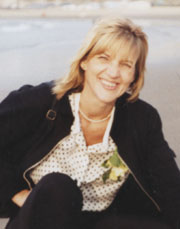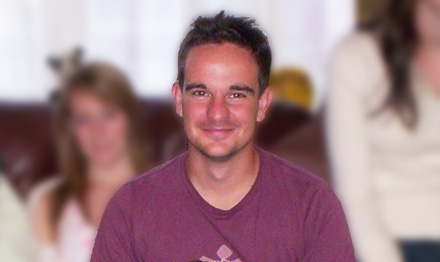Statistics in the dock
Tomorrow a court in Antwerp is expected to rule that Holland’s worst-ever serial killer is innocent of the charges for which she was jailed for life in 2004.
Lucia de Berk, a paediatric nurse, was found guilty of seven murders and three attempted murders in a case that has close parallels with that of Sally Clark, the mother convicted in the UK of murdering her two children. In the Clark case, the expert witness Sir Roy Meadow declared that the chances of Mrs Clarks’ babies having both died as a result of cot deaths was 73 million to one against.
Her case also shares characteristics with that of Benjamin Geen, a British nurse jailed for 30 years in 2006 for murdering two patients and seriously harming 15 others. In Geen’s case, the court heard that he injected a series of patients with drugs that stopped their breathing in order to satisfy “a lust for excitement” when reviving them.
In both cases, the suspicions arose when hospital staff became convinced that the nurses were linked with a series of incidents too numerous to be coincidental. Investigations were launched but in neither case did they follow the scrupulous evidence-gathering needed to demonstrate a truly unusual pattern of events.
In the case of Lucia de Berk, the Dutch court was told by Dr Henk Elffers of the Netherlands Crime and Law Enforcement Research Centre that more children had died on her shifts than appeared possible by chance. He put the odds of her presence being a mere coincidence at one in 342 million, a staggering figure that seems to have blinded the court to any alternative explanation of the deaths.

Lucia de Berk
There was little other evidence to convict her, except for traces of toxic substances found in two of the exhumed bodies. These were equivocal because they could have been caused by the treatments the children had had, and there was nothing to connect her directly to them. Lucia de Berk never admitted guilt, but was convicted in spite of there being no eye-witnesses and no direct incriminating evidence against her.
“Statistics drove the case from start to end” says the British-born statistician Richard Gill, Professor of Mathematical Statistics at the University of Leiden. “Statistics and psychology. Lucia’s conviction for serial murder, and even the ‘proof’ that there were any murders at all – let alone by whom – were almost entirely based on wrong statistical data, wrongly analysed, and wrongly interpreted, by amateurs.”
Professor Gill, who has lived in the Netherlands for 35 years, has been prominent in a campaign to have the case overturned. In dismissing her appeal in 2004, the judges explicitly wrote that statistics had not influenced their verdict, and that every one of the deaths had been indisputably proven to be unnatural. But when, thanks to the campaign, an expert was finally appointed to review the deaths he found that they could just as well have been natural.
The conduct of the case, in Professor Gill’s account, was extraordinary. Convinced she was guilty, the police and the managers of the Juliana Children’s Hospital in The Hague where she worked assembled a dossier in which every death became unnatural when it had occurred during, or after, a shift in which she had worked. For one of the alleged murders, it was established on appeal she had not even been in the hospital for three days around the time it occurred.
Taking account of the shifting numbers and using more appropriate statistical methods reduced the odds from 1 in 342 million to 1 in 48. A further analysis by Professor Gill further reduces the odds to one in nine. The odds, whatever they are, cannot prove guilt or innocence, but the contention of her supporters, who include the philosopher of science Ton Derkson and his sister, the doctor Metta de Noo, is that the original statistical claims led the police and the courts to conclude that any verdict other than guilty was unthinkable.
In Benjamin Geen’s case, papers are now before the Criminal Cases Review Commission casting doubt on the data used and its interpretation. At the request of his defence lawyers, Professor Jane Hutton of the Department of Statistics at Warwick University has prepared a report which says that the information presented in the case was “of inadequate quality”.
“The collection an analysis of data on cases on sudden collapse involving breathing difficulties (SCBD) is such that I do not think the evidence is of any value in assessing the frequency of patterns, hence it is not of value in making inferences as to causes. A statistical analysis, perhaps several, are required to evaluate unusual patterns” she writes.

Benjamin Geen
She points out that there were five SCBD incidents at Horton General Hospital in December 2002, before Geen worked there, and six in December 2003, when he was working there. If all six of the 2003 incidents are linked to Geen, then the assumption must be that the rate of natural causes must be zero, whereas it is known to have been five in 2002. The probably of zero natural causes cases in 2003 is less than 1 per cent, she calculates, and the probability of one of fewer is 4 per cent.
Very similar calculations applied in the Lucia de Berk case. Initially she was linked to nine incidents in which children either died or required rescuscitation, in a single year, and it was claimed that all had occurred during her shifts. But on closer examination it turned out that there had been 11 such incidents, seven on her shifts and four out of them. Seven of the incidents involved only three babies, so were not “independent” events as the court assumed.
What appears to have happened in both cases is described by Professor Hutton as “diagnostic suspicion bias”. Once suspicion was directed at the nurses, every unexpected event occurring while they were on duty tended to be attributed to them, without sufficient effort being made to discover alternative causes. The court in Geen’s case appears to have been given no numerical evidence of how rare SCBD is.
Lucia de Berk was released in 2008 when a retrial was ordered. She suffered a stroke while in prison, and is paralysed in one arm. The expectation is that the Antwerp court will tomorrow conclude the case by declaring her innocent of the murders, a course of action urged on the court by the public prosecutors.
Ben Geen’s case has been taken up by the London Innocence Project, a non-profit legal resource clinic run from I Pump Court Chambers by barrister Mark McDonald and a team of law and journalism students. Geen's appeal was rejected last November, but the Criminal Cases Review Commission can send it back to the Appeal Court if it believes the conviction unsafe.
(A shorter version of this article appeared in The Independent, April 10 2010)



